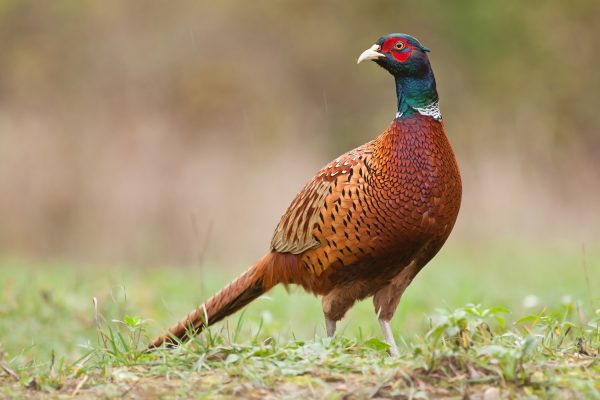Bird Habitats in Iowa

Bird Habitats in Iowa
Iowa’s landscape is home to many bird species. From timber to grasslands and wetlands, different habitats support both migratory and resident birds. These landscapes not only provide food and protection for Iowa’s avian friends, but also benefit water quality through erosion control, water filtration, and pollinator support. Intense agricultural practices have decreased bird habitat and led to the decline of some species. Landowners can help bring populations back. Here are a few ways Iowans can maintain and enhance habitat for bird survival.
Where to Start?
Landowners should learn where their local Farm Service Agency (FSA) office is located. The Conservation Reserve Program (CRP), administered by the FSA, is an excellent resource for landowners who want to enhance bird habitats. By contacting the FSA, you will learn if your land qualifies for a CRP contract. Qualification will depend on previous land use and a few other factors.
A current program offered is the CP-33 program, great for building buffers along waterways for upland species. Another program is the CP-42 program, which focuses on creating a rich environment for pollinators. These pollinators are a crucial piece to the diets of many birds. Review the programs available with an FSA conservation specialist to determine which program best fits your property’s needs. Most contracts are either 10 or 15-year-long commitments. You will receive an annual rental payment, as well as cost-share for habitat establishments. Working with the FSA is a financially rewarding option for most Iowans.
What Birds Do You Want to Attract?
Property owners looking to take the initiative on their own should focus on what bird species they want to attract, sustain, or enhance. No matter what species, owners should plant native species. Native plants are the cornerstone of bird habitats in Iowa or anywhere else. As they provide the best shelter, food, and nesting material while also supporting insects birds rely on for extra nourishment.
Upland species, like the ringneck pheasant, prefer native prairie species like big blue stem, switchgrass, and Indian grass. They will thrive in a mixture of grasslands, shrubs, and field edges. Planting shrub rows such as dogwood, wild plum, and hazelnut offer shelter and protection from predators. Adding additional food sources like sorghum and millet will improve survival over the winter months when insects are no longer present.
Wetland species, especially waterfowl, have different needs. Create shallow water areas with heavy equipment or by hiring earthwork professionals. Gradual slopes to help water stay between six to 18 inches in depth are ideal. Plant species like Cattails and bulrush to provide food and shelter. These plants also will support many invertebrates, which are a critical food source for many waterfowl. Another way may be to build duck boxes or nesting platforms for different species. Be sure to research the right specifications to provide security for the species you are trying to attract. Existing ponds or naturally wet areas may need modest improvements to greatly improve existing habitat conditions.
Do You Need Trees?
Woodlands provide habitat for a wide array of bird species in Iowa. Some birds nest or roost high in oaks and cottonwoods, and others take shelter on or near the forest floor. Owners may consider leaving dead trees standing, often referred to as “snags,” to provide habitat for cavity-nesting species such as woodpeckers. To get two birds with one stone (pun intended), owners can thin their timber by girdling trees. This will kill unwanted trees and leave them standing to allow sunlight to hit the forest floor and create more snags. The added sunlight will allow better understory growth for many songbirds to take cover in.
Consider adding trees that produce various nuts and fruits to offer additional food sources for birds. Species like oaks, hickories, and other nut trees will give turkeys plenty to feast on in the fall. Planting some fruit bearing trees or shrubs, such as elderberries, provide additional food. Always remove invasive species that degrade habitat quality. Lastly, keep small clearings open to allow for nesting areas and feeding grounds.
Owners may have one or all the habitat types listed above, and while there are site-specific strategies to improve habitat, there are a few things to keep in mind no matter what habitat you are working on. Control pesticide use, as pesticides reduce insects that often are at the base of many birds’ diets. Control invasive species to allow for native vegetation growth. Seek out other wildlife professionals or organizations such as Ducks Unlimited, Pheasants Forever, or the National Turkey Federation. These groups all have specialists who want to help improve habitat for certain species all over the country.
Thriving bird habitats are indicative of healthy environments for all types of wildlife. Whether you leverage CRP contracts or take your own steps to improve your property, every step taken contributes to a better refuge for birds. Start small, and over time you will witness a more diverse and plentiful landscape filled with a variety of birds.
By Lane Rumelhart
Check out another article from April 2025
How to Grow Giant Whitetails: Unlocking the Power of Minerals
Also if you are looking for the digital magazine of april 2025 visit here –
or if you are interested in our cattle articles or information, check out –

